The Pufferfish of Blue Planet Aquarium capture the adoration of many of our visitors. These cute-looking, smiley fish make almost everyone melt and want to take a picture with them. They are a type of fish people have always found fascinating. With characters such as Bloat, the Porcupine Puffer from Finding Nemo. You’ll even find Pufferfish in Minecraft.
Classification & Characteristics
Pufferfish belong to the Phylum Chordata (like you and me!). They share a common ability to puff up their bodies when they feel threatened. They rapidly suck in water to achieve this. They are mostly members of the family Tetraodontidae. This is due to their 4 large teeth. They have 2 at the top and 2 at the bottom, that fuse together to form plates. Tetra is Greek for four, odous is Greek for the word tooth. Once they’ve ‘puffed’ up in size, it becomes more difficult for predators to eat them. The larger size also makes them more susceptible to currents in the water. These currents then quickly move them from one position to the next without the need for swimming.
They have a lot of names around the world. Such as Balloonfish, Blowfish, Bubblefish, Swellfish, Toadfish and Sea Squabs. We’ll stick with Pufferfish though. Let me introduce you to the ones that call Blue Planet Aquarium home.
Green Spotted Pufferfish
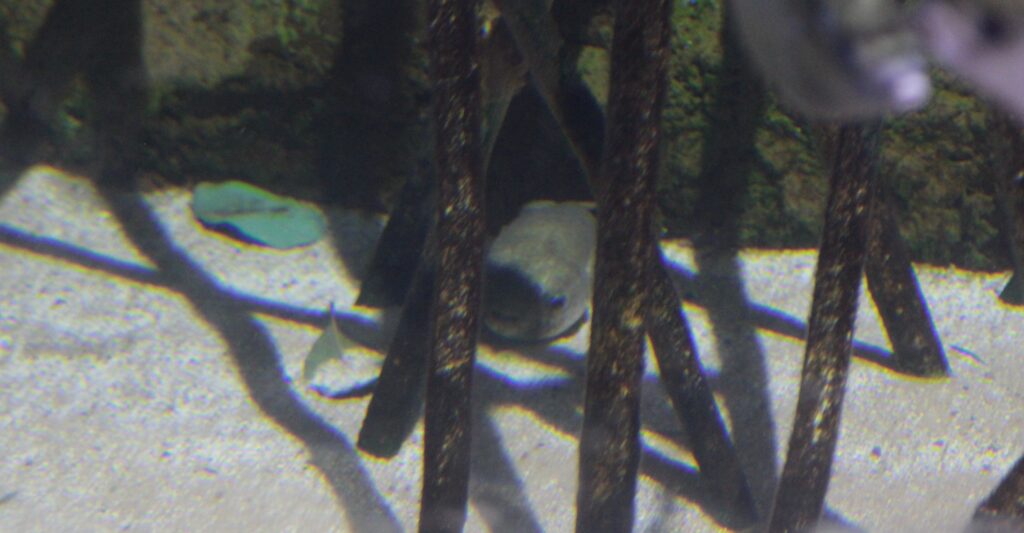
You can find these guys in our Caiman Crocodile Exhibit. Mostly amongst the roots of the Mangroves, with the Archerfish. They’re a shy bunch, you’ll need to keep your eyes open. Green Spotted Pufferfish (Dichotomyctere nigroviridis) can grow to sizes of 17cm. Like many Pufferfish, they’re poisonous to other animals, so you don’t really want to be eating them! When they’re juveniles they live in freshwater rivers and streams. Hiding amongst the mangrove roots and shoreline vegetation of South & South-East Asia between India and the Philippines. When they reach maturity, they seem to prefer brackish water. Brackish water is salty, but not as salty as full marine water. In areas where Fresh water streams and rivers start to feed into the sea or ocean.
Dogface Pufferfish (Arothron nigropunctatus)
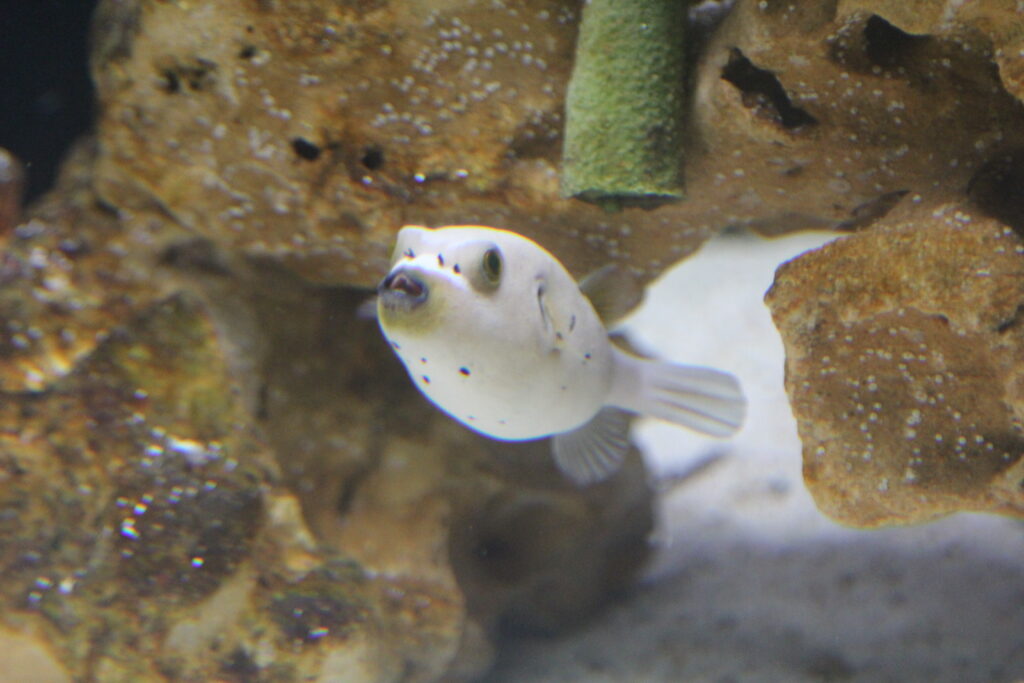
You’ll find this guy above our Coral Cave exhibit, sharing the tank with Banggai Cardinals. They can grow almost twice as big as Green Spotted Pufferfish. Reaching lengths of 33cm. A purely saltwater species. Endemic throughout the tropical regions of the Indian and Pacific Oceans. Inhabiting the edge of reefs and lagoons. living at depths between 3 and 25 metres in what is known as the Neritic zone. Relatively shallow waters near the coasts or over continental shelves. They get their common name from their cute puppy-like faces! They’re also known as Black Spotted Pufferfish. Similar to the Green Spotted, the Dog-Face Puffer is regarded as one of the most poisonous animals on the planet! You certainly don’t want to look at eating one. Unless prepared by an expert.
Golden Pufferfish
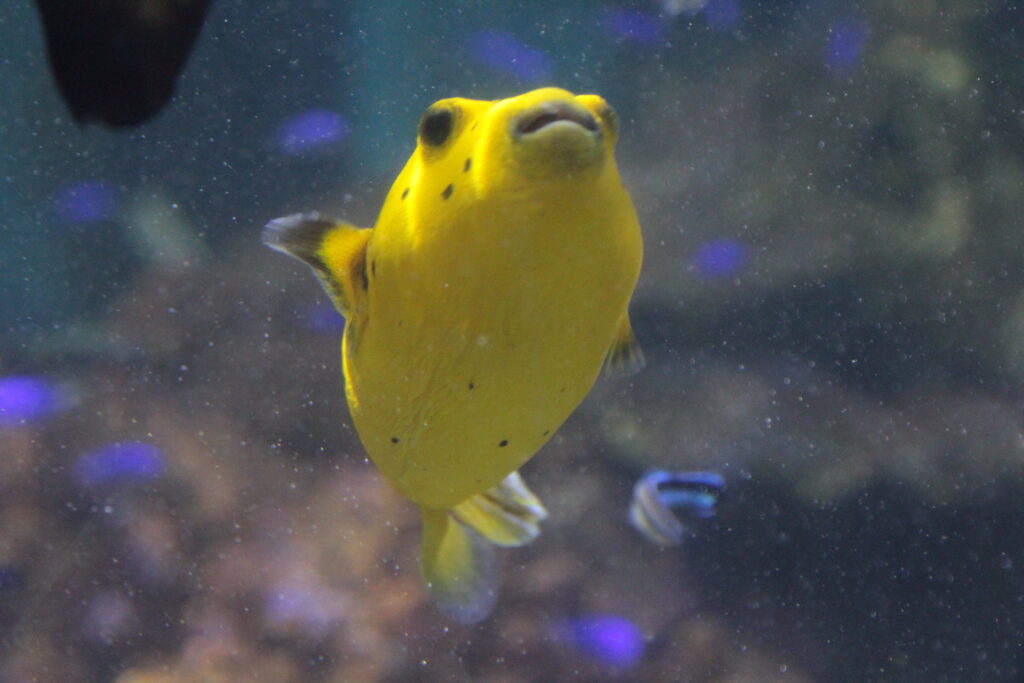
In reality, these are the same species as the Dogface Pufferfish. However, their colouration is different. They are a bright yellow/golden colour, compared to a pale white and grey. Isaac the Golden Pufferfish at Blue Planet lives in our Coral Cave Exhibit. He loves swimming at speed around the exhibit, he also loves dinner time. In the wild, they would eat a diet of crustaceans, coral polyps, molluscs, sponges and algae. These guys reach sizes of up to 20cm and live in similar places to the Dogface Puffer.
Long Spined Porcupinefish (Diodon holocanthus)
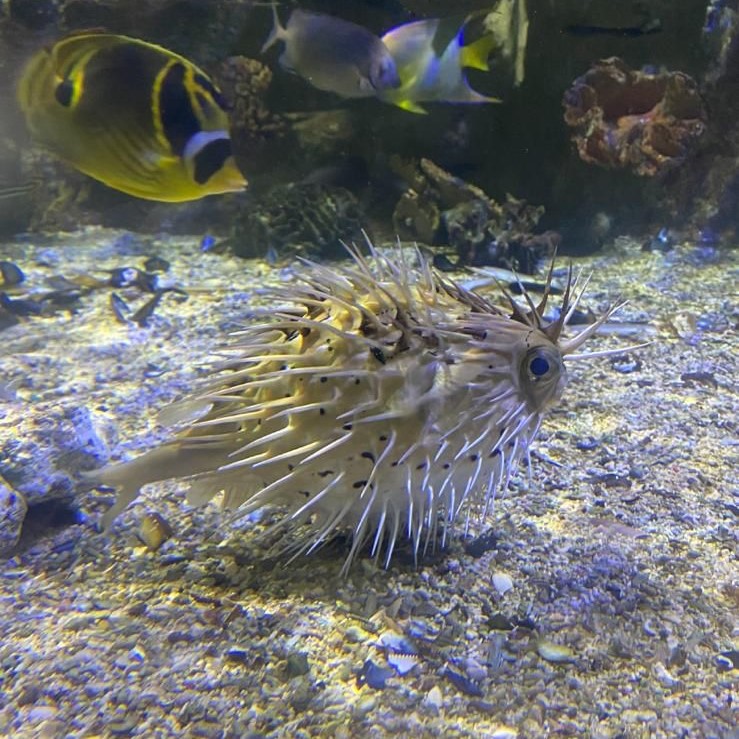
A few of these guys call Blue Planet home. A pair in our Coral Cave Exhibit and one in the Reef Section of the Ocean Exhibit. This is the part of the shark tunnel with the platform, where our junior divers have their shark diving experience. Unlike the others, these are not Tetraodontidae, instead, they are Diodontidae! Only inflating when they feel threatened or stressed. It is not a common sight to see. Especially in the aquarium, as they’re safe and well-fed. It’s not something we would encourage them to do or put them through. However, they do have morning stretches! They sleep hooked onto rocks or in crevices, when they awake sometimes, they like to stretch it out! These fish are also super poisonous. Despite that, they are sometimes prepared as Fugu. Which maybe you’re familiar with.
Stars and Stripes Pufferfish (Arothron hispidus)
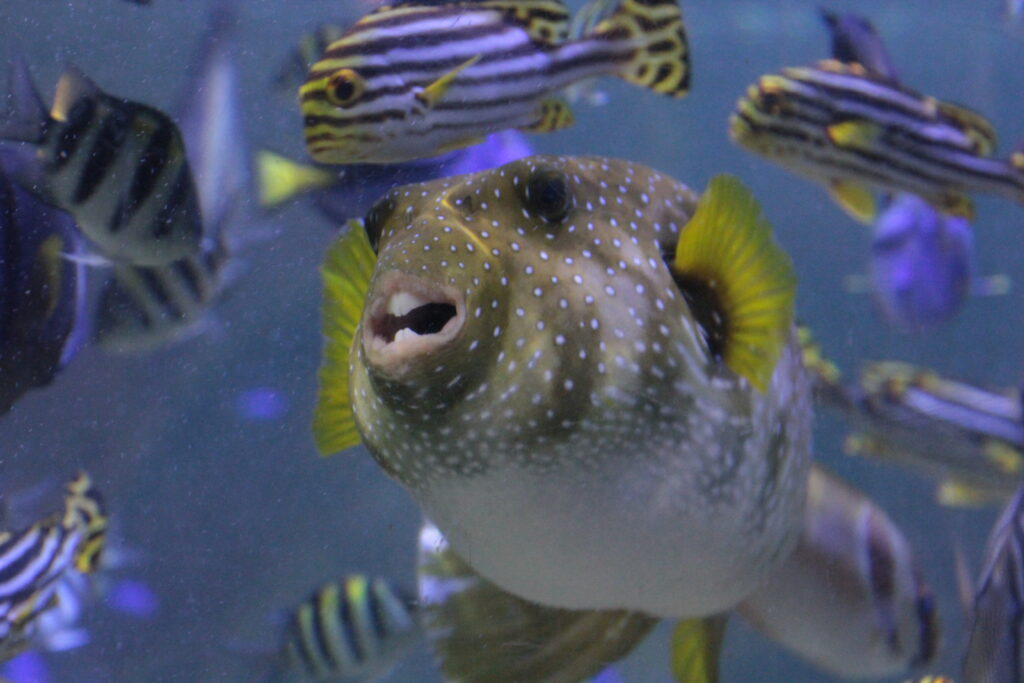
This one gets its name from its colouration and pattern. They’re also known as White Spotted Puffers. With white dots and stripes around its body. You’ll find the one that lives at Blue Planet in our Coral Cave Exhibit. Alongside the other Indo-Pacific reef dwellers! These can grow quite big, reaching sizes of 45cm! Found across reefs and lagoons around the Indian and East-Pacific oceans. Similar to the other puffers of Blue Planet they tend to eat crustaceans and molluscs. Things like muscles and crabs. Curiously with this species, males tend to build nests to attract females. They create a ‘nest’ or bowl in the sand, if a female is impressed by it, she’ll lay her eggs in it!
